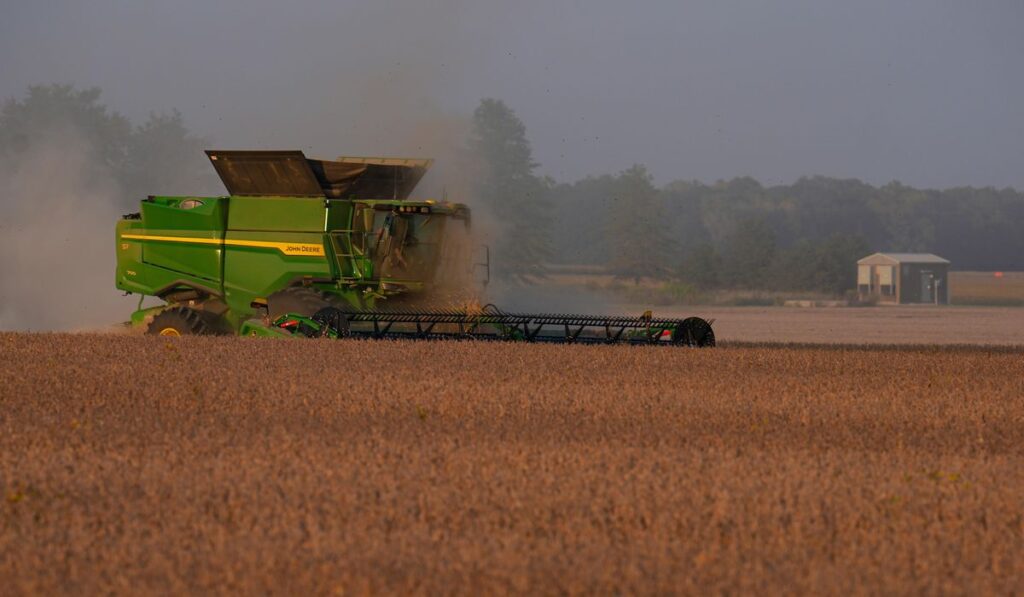China has reportedly purchased its first shipments of soybeans from U.S. farmers this year, and that development lands at a high-stakes moment as President Trump prepares for a major sit-down with Chinese leaders. This article looks at what the purchase means for farmers, markets, and the broader trade picture heading into diplomatic talks.
The news that China bought its first U.S. soybean shipments this year is a real-world signal for American agriculture. Farmers who endured years of tariffs and unpredictable demand are watching prices and sales with renewed interest, and that matters in the heartland where every bushel counts. Commodity markets react quickly to gestures that suggest demand is returning, and this purchase could loosen pressure on domestic soybean stocks.
For rural communities, even modest export activity can translate into steadier planning and better cash flow for planting and equipment decisions. The shipment is not a cure-all, but it is a positive move after a period of uncertainty that squeezed margins for many growers. When foreign buyers pick American crops again, it affirms both product quality and competitive pricing in global markets.
From a policy angle, timing is everything. The purchase comes just before President Trump’s major sit-down with Chinese leaders, which frames the event as part negotiation and part signal. A Republican perspective treats this as evidence that firm negotiating posture and clearer trade expectations can deliver concrete results for U.S. workers and farmers. That message resonates with voters who want deals that work for American producers.
Trade flows for soybeans are a window into broader economic ties. China is one of the world’s largest soybean importers, and when it shifts orders, global supply chains feel it fast. Restoring consistent purchases helps U.S. exporters compete against alternative suppliers and stabilizes the agricultural sector’s contribution to the national balance of trade. Consistent export relationships also incentivize investment in storage, transport, and processing facilities at home.
There are practical hurdles to turning a headline into a long-term recovery for growers. Weather, planting decisions, and global crop yields still matter, and one shipment does not guarantee sustained demand. Traders and farmers will be watching subsequent bookings, price trends at elevators, and whether contracts become steady rather than sporadic. Still, a first sale is a useful data point after months of uncertainty.
Politically, the moment gives the administration a talking point it can use to make a case for tough-minded diplomacy. Republican messaging will likely emphasize that standing firm and negotiating from a position of strength benefits American workers and farmers. At the same time, officials and industry groups will press for predictable market access so that agricultural communities can make long-term plans instead of reacting to headline swings.
Supply chain logistics also play a role in how quickly this purchase turns into visible benefits for farmers and rural economies. Efficient transport from farm to port, timely inspections, and clear trade paperwork all influence when and how exporters are paid and when farmers can close out contracts. Improving those processes reduces friction and helps ensure that export wins translate into local economic gains.
Ultimately, this first sale of U.S. soybeans to China this year is more than a single shipment; it is a sign that negotiation and market dynamics are moving in a direction favorable to American agriculture. While caution is warranted and long-term patterns matter more than one headline, growers and local economies have a tangible reason to watch the next steps closely as diplomatic talks proceed. The coming weeks will tell whether this purchase sparks a steady return to pre-tariff trade levels or remains an isolated transaction.



